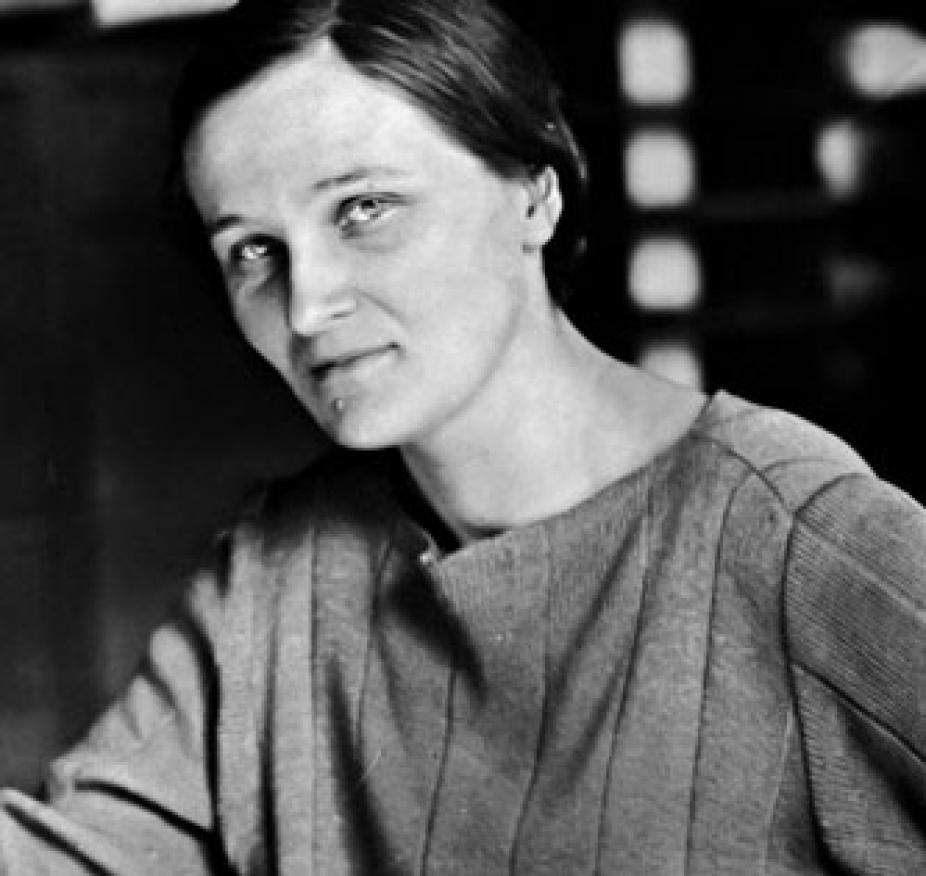Cecilia Payne (1900–1979)
Cecilia Payne was a British-born American astronomer and astrophysicist. She was the first to discover that stars were composed primarily of hydrogen and helium. When her mother refused to fund her college education, she applied for and received a scholarship at Cambridge College. Even though Cecilia completed her studies at Cambridge, she was refused a degree because she was a woman.

Cecilia Payne.
Cecilia decided to leave England for the United States to accept a graduate fellowship from Harlow Shapley, the new director of the Harvard College Observatory. At the time, Harvard was renowned for its comprehensive study of the stellar spectrum. Cecilia earned her Ph.D. (~1925) in astronomy from Radcliffe College. Her thesis involved measuring the absorption lines in stellar spectra and was described by Russian-American astronomer Otto Strauve as “the most brilliant Ph.D. thesis ever written in astronomy.”
“She showed that the wide variation in stellar spectra is due mainly to the different ionization states of the atoms and hence different surface temperatures of the stars, not to different amounts of the elements. She calculated the relative amounts of eighteen elements and showed that the compositions were nearly the same among the different kinds of stars. She discovered, surprisingly, that the Sun and the other stars are composed almost entirely of hydrogen and helium, the two lightest elements. All the heavier elements, like those making up the bulk of the Earth, account for less than two percent of the mass of the stars.” - Steven Soter and Neil deGrasse Tyson 1
Later, she converted her thesis into a book titled “Stellar Atmospheres.”
In 1934 she married the Russian astronomer Sergei Gaposchkin. Their professional collaboration contributed widely to the physical understanding of the chemical elements in the stars.
Although it took until 1956, Cecilia Payne became the first woman to be promoted to full professor from within Harvard, and is often credited with breaking the glass ceiling for women in the Harvard science department and in astronomy, as well as inspiring entire generations of women to take up science.
Honors and Awards
- Elected member of Royal Astronomical Society while still a student at Cambridge 1923.
- Annie J. Cannon Award in Astronomy (1934)—first recipient.
- Member of the American Philosophical Society (1936)
- Member of the American Academy of Arts and Sciences (1943)
- Award of Merit from Radcliffe College (1952)
- Rittenhouse Medal from the Rittenhouse Astronomical Society at the Franklin Institute (1961)
- Professor Emerita of Harvard University (1967)
- Henry Norris Russell Lectureship of the American Astronomical Society (1976)
- The American Physical Society's Doctoral Dissertation Award in Astrophysics renamed the Cecilia Payne-Gaposchkin Doctoral Dissertation Award in Astrophysics (2018).
- Honorary Degrees from Rutgers University, Wilson College, Smith College, Western College, Colby College, and the Women's Medical College of Pennsylvania.
- Asteroid 2039 Payne-Gaposchkin named after her.
- The Payne-Gaposchkin Patera (volcano) on Venus is named after her.
- One of the ASAS-SN telescopes deployed in South Africa was named after her.
- Institute of Physics Cecilia Payne-Gaposchkin Medal and Prize named in her honor in 2008.
Bibliography
1 Cosmic Horizons: Astronomy at the Cutting Edge, edited by Steven Soter and Neil deGrasse Tyson, a publication of the New Press. © 2000 American Museum of Natural History. (https://www.amnh.org/learn-teach/curriculum-collections/cosmic-horizons-book/cecilia-payne-profile)